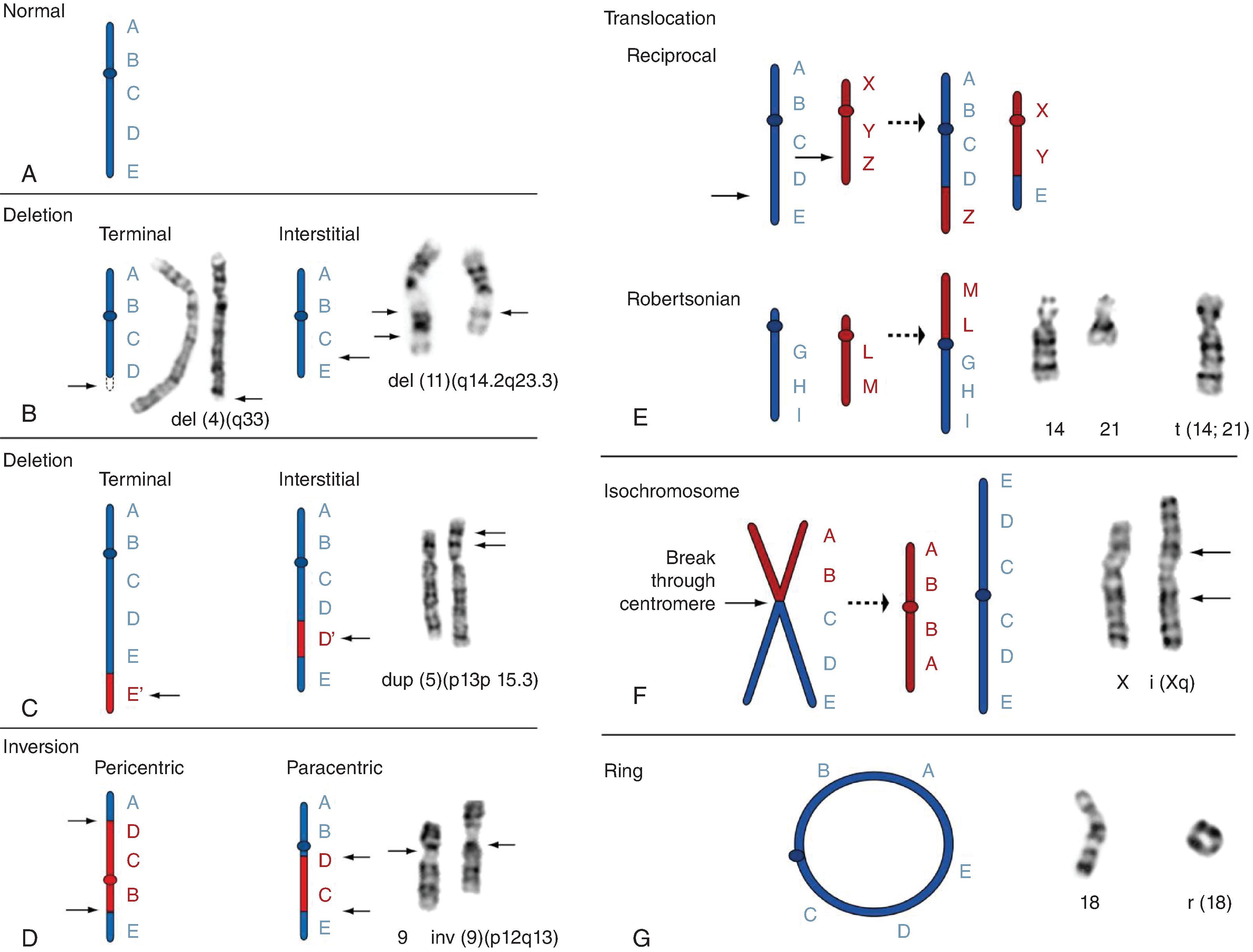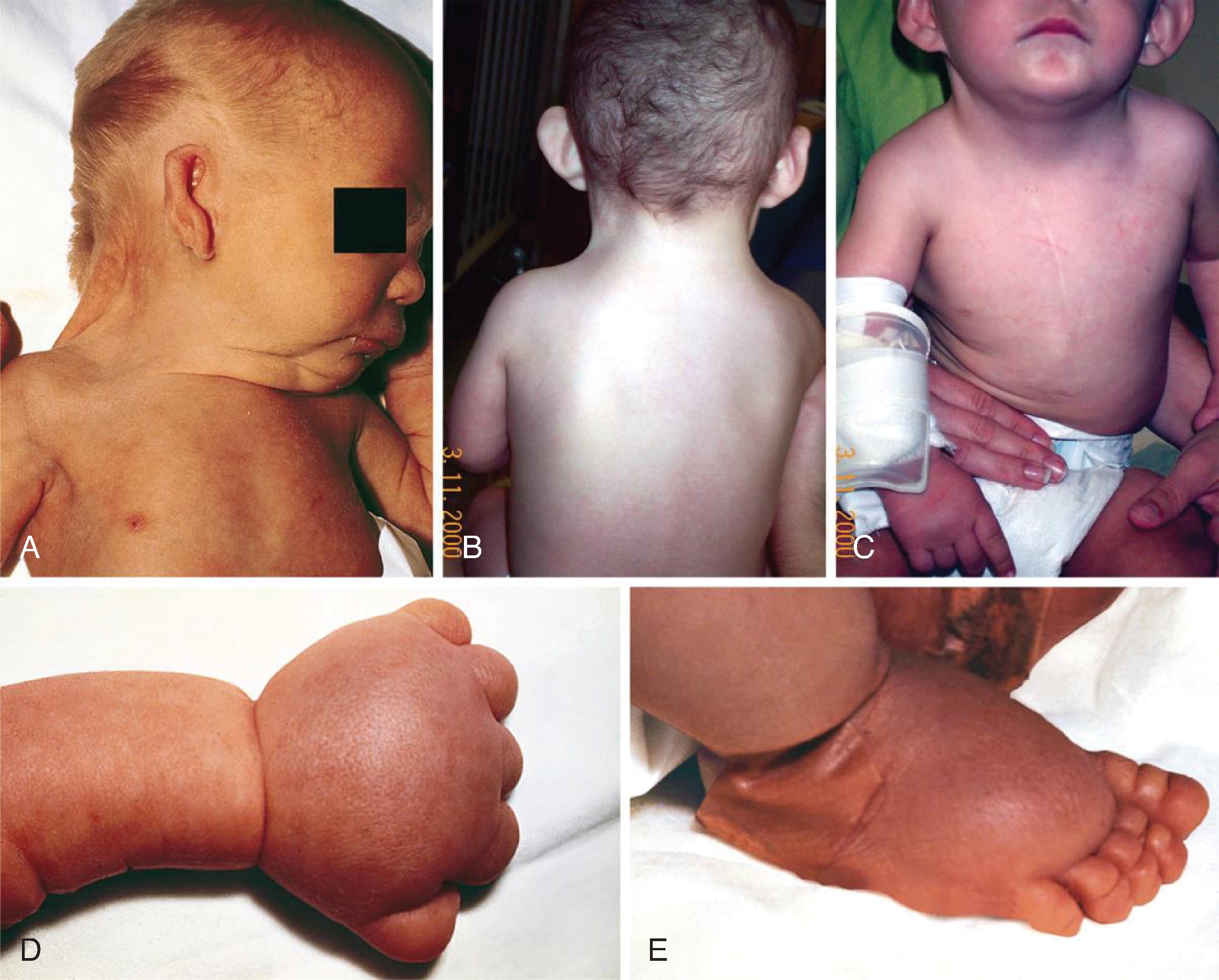Physical Address
304 North Cardinal St.
Dorchester Center, MA 02124
Chromosomal abnormalities can be numerical abnormalities (aneuploidy), structural anomalies such as copy number variants (microdeletions or duplications), inversions, translocations, and the formation of isochromosomes or ring chromosomes.
Sex chromosome abnormalities such as Turner syndrome, triple X syndrome, and Klinefelter syndrome have been studied.
The most common prenatally diagnosed aneuploidies include trisomy 13, trisomy 18, and trisomy 21. Trisomy 13 and 18 can be diagnosed on prenatal ultrasound by multiple anomalies. Trisomy 21 is frequently seen and is characterized by a widely variable phenotype with intellectual disability and an average life span of 6 decades.
Microdeletion and microduplication syndromes include a host of phenotypes that typically involve some level of intellectual disability and characteristic physical features. DiGeorge syndrome has been studied extensively in view of its association with congenital cardiac defects. Other notable microdeletion/microduplication disorders include deletion 1p36, Wolf-Hirschhorn, cri-du-chat, Williams-Beuren, and WAGR (Wilms tumor–aniridia–genitourinary anomalies–retarded development) syndromes. All aneuploidies, microdeletions, and microduplications require testing through a chromosomal microarray.
Chromosomal conditions affect 1 in 150 live births and include numerical abnormalities (aneuploidy) and smaller chromosomal structural abnormalities such as copy number variants (CNVs) (microdeletions or duplications), inversions, translocations, and the formation of isochromosomes or ring chromosomes ( Fig. 80.1 ). In this chapter, we focus on some of the more frequently seen aneuploidies that affect the newborn and are often compatible with survival, such as Turner syndrome, triple X syndrome, Klinefelter syndrome, and trisomies of chromosomes 13, 18, and 21. The prognosis for aneuploidies varies widely and includes patients with trisomy 21 living into their 60s; patients with trisomy 13 or 18, rarely living beyond their first year; and most other autosomal trisomies resulting in early pregnancy losses. Unless there is mosaicism, trisomies such as those of chromosome 16, frequently result in first-trimester spontaneous miscarriages.

Most cases of aneuploidy are identified prenatally through screening with cell-free DNA and/or sonographic findings. Confirmatory diagnostic testing is performed prenatally via chorionic villus sampling or amniocentesis. Postnatally, the diagnosis may be suspected based on an abnormal physical exam or laboratory test findings, and confirmatory testing is typically performed on blood. Standard karyotype techniques detect additional or absent chromosome material including chromosomal duplications and deletions greater than 5 to 10 Mb in size. The karyotype can also be used to evaluate the chromosome configuration and identify translocated chromosomal material and ring chromosomes.
CNVs entail a large group of structural alterations within a chromosome resulting in extra or missing copies of specific regions of DNA and are typically detected via chromosomal microarray. They are classified as pathologic, benign, or of uncertain significance, and some CNVs have variable expressivity. The most common clinical feature of a CNV is intellectual disability. The most well-known and well-described microdeletion syndrome is DiGeorge syndrome, a microdeletion in 22q11.2. Family members affected with a pathogenic 22q11.2 deletion exhibit variable clinical severity; some require medical treatment and frequent hospitalization whereas others require no clinical interventions.
The pathogenicity of a CNV is dependent on whether it is a duplication or deletion, its size/length, whether it is of parental origin (such as in Prader-Willi syndrome [PWS] and Angelman syndrome), and the function of the genes involved within that segment. These details are best clarified by chromosomal microarray. Possible results when testing for a CNV include “benign,” with no disease-related changes seen in that patient’s copy number compared with the general population; a “pathologic” result that indicates a change in the copy number compared with the general population and that is believed to contribute to a disease or disability; or a “variant of uncertain significance” result that indicates a change has been found compared with the general population, but with an uncertain relationship of this change to disease. Patients who are interested in undergoing testing for CNVs should be counseled regarding their personal beliefs and attitudes about the potential outcome of having a child with disabilities. Furthermore, counseling should include the idea that identification of a variant may be associated with a variable phenotype and may be carried be one of the parents.
Turner syndrome is a sex-chromosome disorder resulting in a female phenotype with only one effective X chromosome. The hallmarks of this clinical syndrome include short stature, neck webbing, widely spaced nipples, cardiovascular disease, and ovarian failure ( Fig. 80.2 ). Prenatally, ultrasound findings may include increased nuchal translucency, cystic hygroma, cardiac anomalies including aortic coarctation, or fetal hydrops ; more than 95% of fetuses with Turner syndrome end in a miscarriage. If not identified prenatally, the diagnosis is most commonly suspected at birth due to lymphedema of the hands or feet, neck webbing, or nail dysplasia. Although Turner syndrome is thought to be the most common sex-chromosome abnormality in females, the true prevalence is difficult to determine due to those with a milder phenotype remaining undiagnosed.

The majority of patients diagnosed with Turner syndrome are subsequently found to have monosomy X on testing. A subset of patients are found to have a mosaic complement, with the remaining patients exhibiting a structural rearrangement that renders one X chromosome abnormal. Examples of these structural rearrangements include isochromosomes, ring chromosomes, or chromosomal deletions.
The diagnosis of Turner syndrome is confirmed with karyotype. Both aneuploidy and structural rearrangements are readily identified by this method. After a confirmed diagnosis, patients need to be evaluated and monitored for associated anomalies including but not limited to cardiac disease, hearing and eye abnormalities, and learning disabilities. As the patient ages, counseling should be performed regarding the differences in fertility compared with the general population. Overall mortality rates are increased approximately threefold for patients with Turner syndrome compared with the general population. This has been found at all ages and for many major causes of death.
Triple X syndrome, defined as a female with a 47,XXX genotype, presents with a widely variable phenotype. Clinical features include taller height compared with their cohorts, some cognitive disability, psychological disorders, and/or a delay in motor milestones. Puberty and fertility are generally unaffected, but some women are at risk for early menopause. This syndrome does not have any specific fetal markers notable on ultrasound and is rarely diagnosed prenatally. Many individuals are asymptomatic throughout their lives and remain undiagnosed. The diagnosis of triple X syndrome is made via standard karyotype, in which the number of X chromosomes can be readily counted.
Turner syndrome and triple X syndrome are not typically inherited. The etiology of these syndromes, as with most aneuploidies, is due to nondisjunction of either the egg or sperm cells during meiosis. If nondisjunction occurs after conception, the patient may present with a mosaic version of these syndromes.
Become a Clinical Tree membership for Full access and enjoy Unlimited articles
If you are a member. Log in here